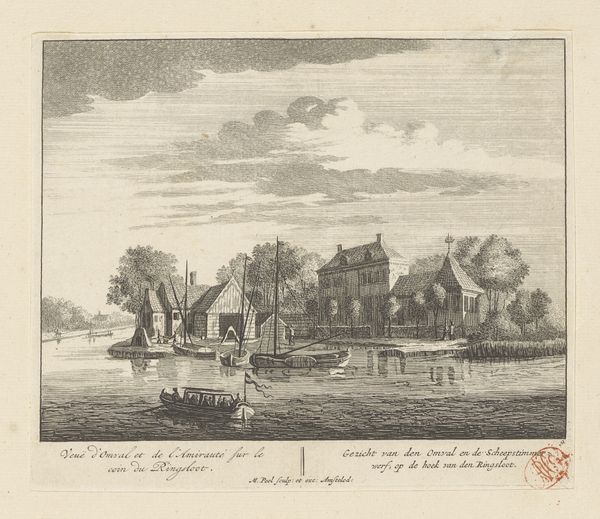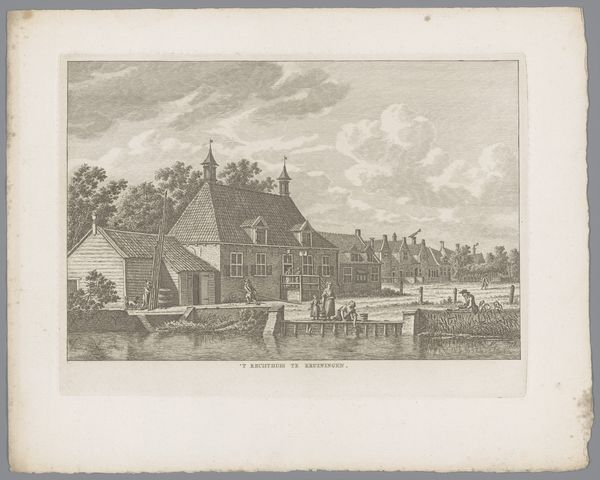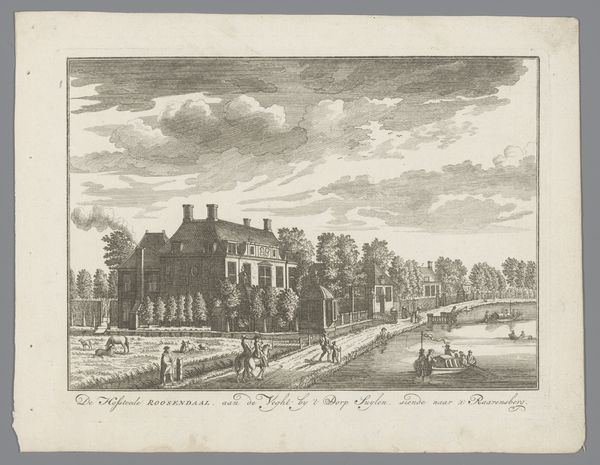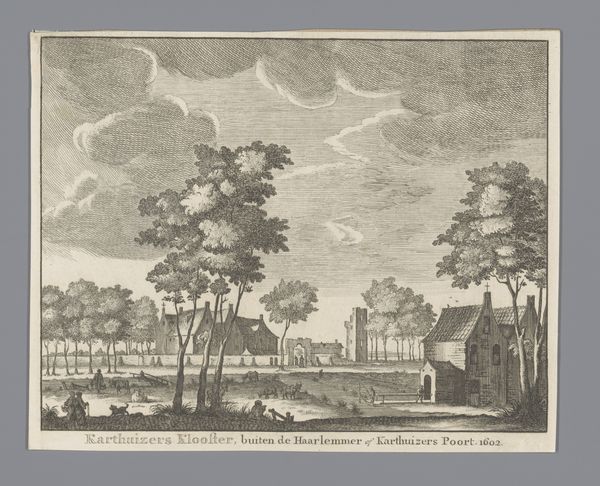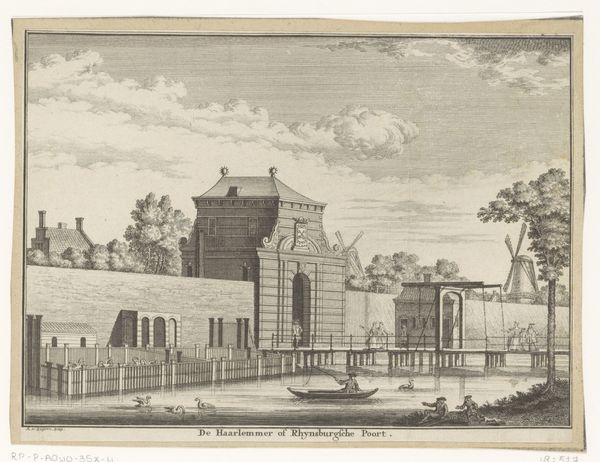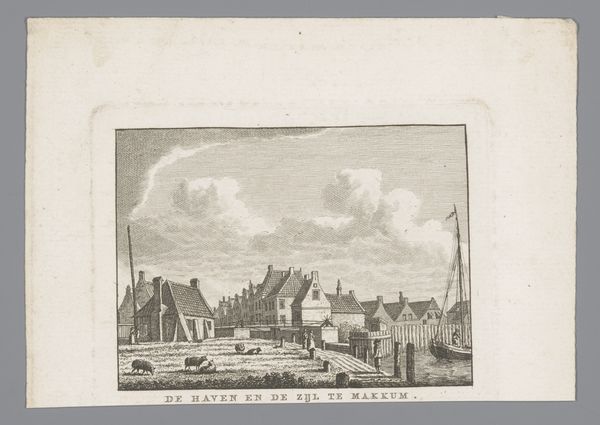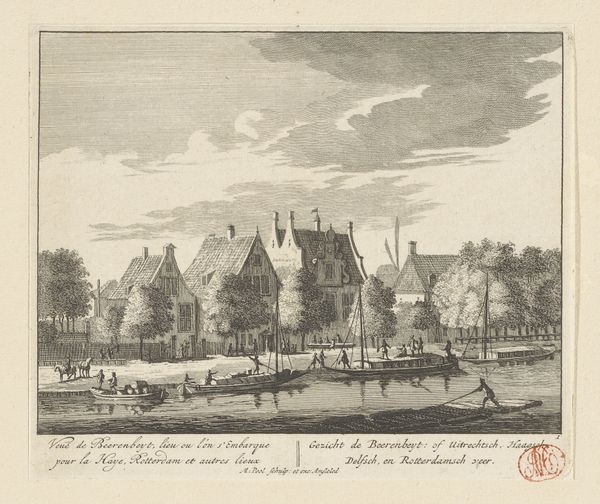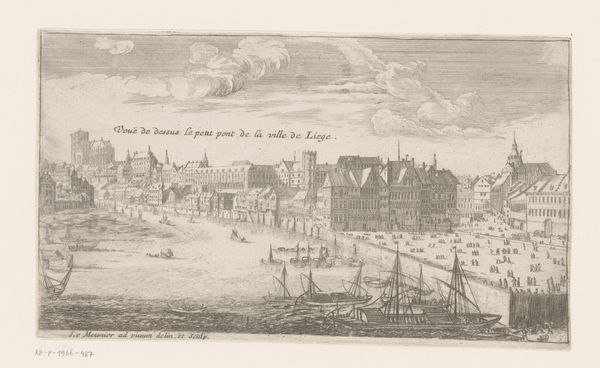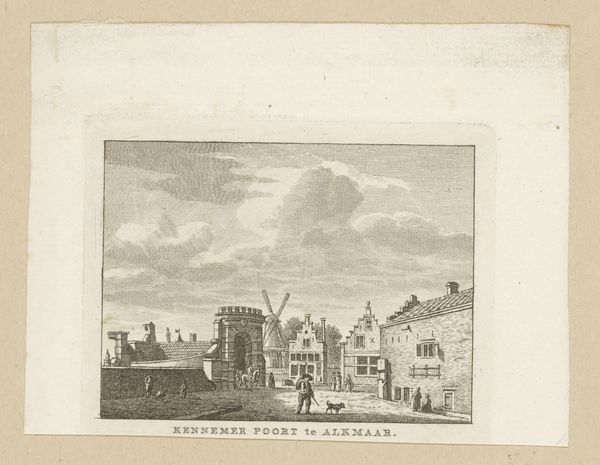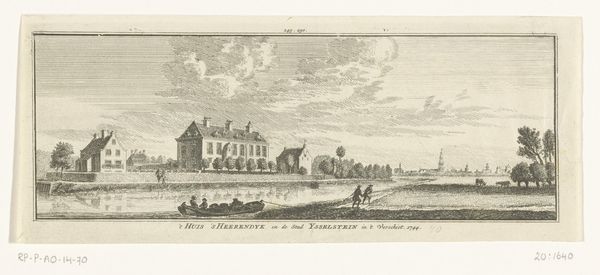
print, etching
#
baroque
#
dutch-golden-age
# print
#
etching
#
landscape
#
cityscape
Dimensions: height 135 mm, width 180 mm
Copyright: Rijks Museum: Open Domain
Editor: We're looking at "Gezicht op Hofstede Hoogerlust," an etching by Gerardus Condet, dating from somewhere between 1725 and 1764. It's a detailed landscape, and what strikes me is the separation—there's the manicured estate, then the water with people in boats. How do you interpret this division? Curator: The very precise detail work emphasizes the economic divides inherent in 18th-century Dutch society. Look at the composition: The Hoogerlust estate, meticulously rendered, represents the opulence of the elite. However, observe the bodies of the workers and fisherfolk. The very labor performed upon the waters enables such landownership. How might you connect that landscape to the realities of labor and ownership at the time? Editor: So, you're suggesting that the print subtly highlights the class differences? The owners are literally elevated and separated. Curator: Precisely! Think about the symbolism embedded in landscapes of this period. They weren't merely pretty pictures but potent statements about power, property, and social hierarchy. What do we make of the owner being mentioned by name in the print’s inscription? Who was being targeted to purchase such an image? How were class allegiances created and reinforced in this time? Editor: I hadn't considered the market for the print itself. I see how it’s all connected, not just a pleasant view, but a whole system reflected in ink. It speaks to the societal structures back then and now. Curator: Absolutely. And understanding the social and historical context helps us to decode those intended messages. This landscape presents so much more than meets the eye. Editor: Thank you for guiding me to explore layers beyond what's apparent, unveiling how art serves as a reflection of social hierarchies.
Comments
No comments
Be the first to comment and join the conversation on the ultimate creative platform.
